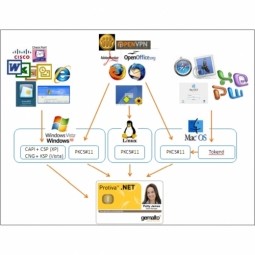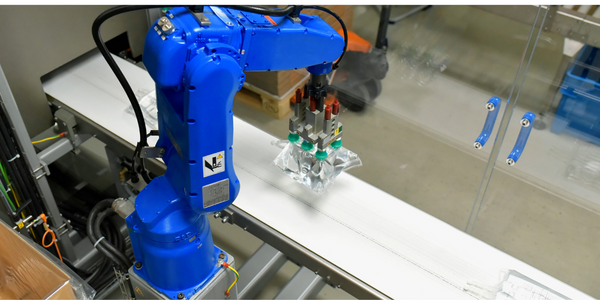公司规模
Large Corporate
地区
- Asia
国家
- China
产品
- IBM® Aspera® Connect Server
- IBM® Aspera® Connect browser plug-in
- IBM® Aspera® Console
- IBM® Aspera® Cargo
技术栈
- IBM Aspera
实施规模
- Enterprise-wide Deployment
影响指标
- Productivity Improvements
- Digital Expertise
技术
- 应用基础设施与中间件 - 数据交换与集成
适用行业
- 生命科学
适用功能
- 产品研发
服务
- 数据科学服务
关于客户
GigaScience 是一本在线开放获取、开放数据生命科学期刊,由 BGI 和 BioMed Central 联合出版。该期刊发表“大数据”文章,涵盖生物和生物医学科学的方方面面,包括基于难以获取的数据的领域,如成像研究、神经科学和系统生物学。该期刊接受和发表的所有手稿都侧重于大规模数据集的使用、分析或工具开发。GigaScience 旨在为数据密集型科学研究的可重复性问题提供解决方案。GigaScience 的目标是使研究可重复和可重复使用、研究文章透明化以及大规模数据易于访问和引用,它将与每篇已发表文章相关的完整数据集托管在一个综合公共数据库 GigaDB 中。它还为每个数据集提供了一个“数字对象标识符”,使人们更容易找到他们正在寻找的文件,并为人们在重复使用或再现研究时直接引用数据提供了手段。
挑战
GigaScience 是一本在线开放获取、开放数据生命科学杂志,发表涵盖广泛生物和生物医学科学的“大数据”文章。该杂志将与每篇已发表文章相关的完整数据集托管在综合公共数据库 GigaDB 中。但是,为支持 GigaScience 杂志上发表的文章而提交的数据集大小可达数 TB。GigaScience 发现 FTP 不适合移动大文件,因为传输速度通常非常慢,如果用户遇到网络问题,则必须从头开始重新传输。此外,由于网络延迟高,长距离传输特别耗时且不可靠。有一次,GigaScience 面临着上传 15 TB 肝癌数据集的挑战。排除 FTP 后,GigaScience 必须将数据加载到 8 个硬盘上,并将其从提交者物理传输到杂志,这是一个成本高昂且耗时的过程。
解决方案
为了处理如此庞大数据集的传输,GigaScience 采用了一套 IBM Aspera 软件产品,为作者、审阅者和其他用户提供工具,以最快速度上传和下载稿件附带的所有大型数据集。GigaScience 选择 IBM® Aspera® Connect Server 将提交稿件附带的所有数据集快速传输到 GigaScience 数据库,并使用 IBM® Aspera® Console 管理和监控整个端到端传输过程。作者使用 Aspera 的免费下载 Aspera Connect 插件将稿件相关数据集提交到 GigaScience 的私人数据存储站点。然后,工作人员审阅者使用浏览器插件访问文件,以高速下载和上传文件。如果论文被接受发表,数据将通过 Aspera 传输到期刊的公共数据库 GigaDB,期刊读者可以随时查看和下载数据,同样使用 Aspera Connect 插件。
运营影响
数量效益

Case Study missing?
Start adding your own!
Register with your work email and create a new case study profile for your business.
相关案例.

Case Study
Corporate Identity Solution Adds Convenience to Beckman Coulter
Beckman Coulter wanted to implement a single factor solution for physical and remote logical access to corporate network. Bechman Coulter's users were carrying smart card badges for doors, but also needed a one-time password token to access to our corporate network when they were not in the office. They wanted to simplify the process.

Case Study
Embracing Business Success in Real Time
· Increase control over growing Big Data to improve business decisions · Manage data for 28,000 biotechnology stockkeeping units in the fields of microbiology, molecular biology, animal cell cultures, plant tissue cultures, and lab ware for laboratory chemicals · Accelerate report generation and analysis with real-time data

Case Study
Flow Robotics: Scaling Up Production and Accelerating Product Development with IoT
Flow Robotics, a Danish manufacturer, developed flowbot™ ONE pipetting robots to alleviate the strain on bioanalysts in life-science laboratories and hospitals across Europe. These robots were designed to automate part of the testing process, speeding up the time it takes to produce results and reducing pressure on staff. However, the company faced challenges in scaling up production and accelerating product development. High workloads and physically challenging conditions have long been an issue for laboratory professionals. Flow Robotics estimates that around half of medical lab technicians carry out the same arm movements for at least a quarter of their working day. The American Society for Clinical Pathology reported that 85% of laboratory professionals feel burnt out; 36% struggle with inadequate staffing; and 32% face a heavy workload and pressure to complete all testing on time.

Case Study
Revolutionizing Aerospace Industry with 3D Printing: A 63% Lighter Titanium Part
GE Aviation, a renowned name in the aerospace industry, recognized the potential of 3D printing technology in transforming the sector. The primary challenge was to reduce the weight of the aerospace parts, which would directly impact the fuel costs. A lighter airplane would mean lower fuel consumption, leading to cost savings and a smaller carbon footprint. However, achieving this weight reduction without compromising the strength and functionality of the parts was a significant challenge. Traditional manufacturing methods were not able to provide the desired weight reduction while maintaining the required stiffness and strength of the parts. The challenge was to find a solution that could create strong, light, and functional aerospace parts.
Case Study
Material Intelligence at Ethicon: Sustaining Medical Device Manufacturability and Improving Patient Care
Ethicon, a world-class medical devices company, faced several challenges in its operations. The rapid selection of manufacturing materials compliant in global markets was critical to assure patients, practitioners, and purchasing organizations of the biocompatibility of their medical devices. Ensuring supply chain continuity and minimizing risks of obsolescence for medical devices due to regulatory changes were also crucial in meeting Ethicon’s ongoing commitment to maintaining patient care. Furthermore, the engineers at Ethicon were developing the next generation of medical devices and needed to access historical material data to accelerate new product development. The process of centralizing and digitalizing its materials information was a significant challenge that Ethicon needed to overcome.
Case Study
IWT's Transformation: Customizing with Efficiency in IoT
IWT, a company specializing in the design, manufacture, and installation of washing systems for the life sciences and pharmaceutical industries, faced a significant challenge in managing its wide product portfolio. The company manufactures 45 different models, 60% of which are customized to some degree. This high level of customization, combined with limited production quantities, necessitated a controlled process for managing the release of engineering changes. The goal was to achieve efficiency, reduce process time, and better coordinate production throughout the organization. The need for strict compliance in heavily regulated industries further complicated the situation. IWT's existing PLM journey with Dassault Systèmes’ SOLIDWORKS for 3D CAD and Enovia for managing CAD data and Bills of Materials (BOMs) was proving inadequate. The system had limited part classification, no workflow, and no tool to ensure data consistency. The management of non-CAD documents was also a challenge, with information often difficult to find and access.



